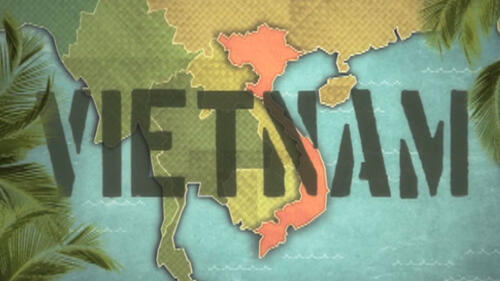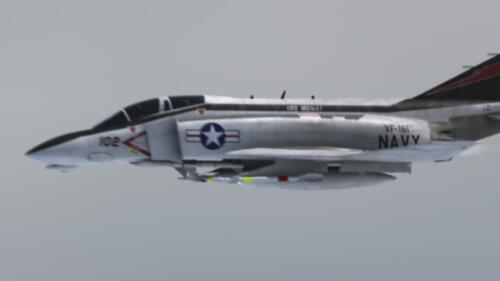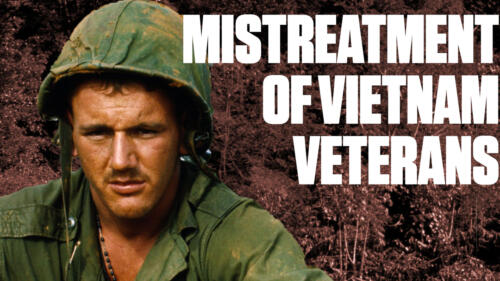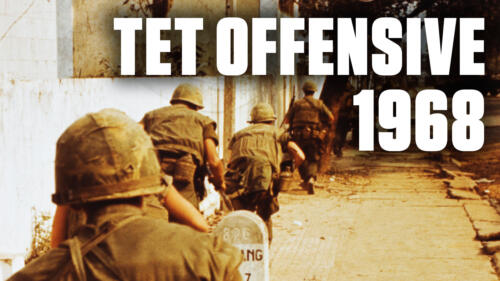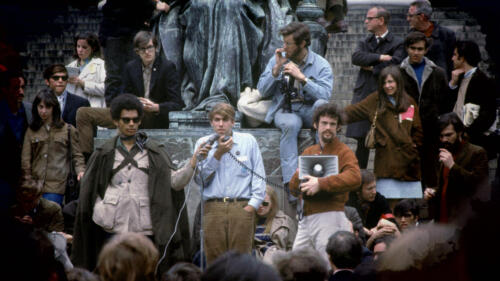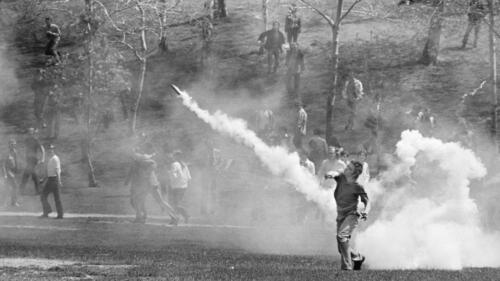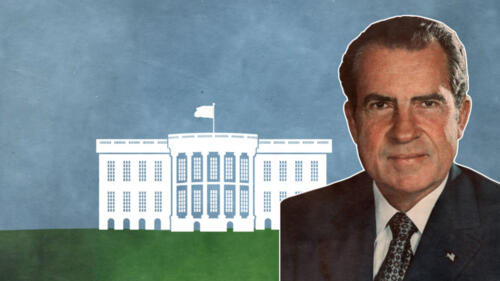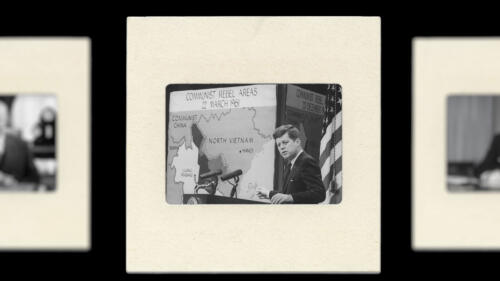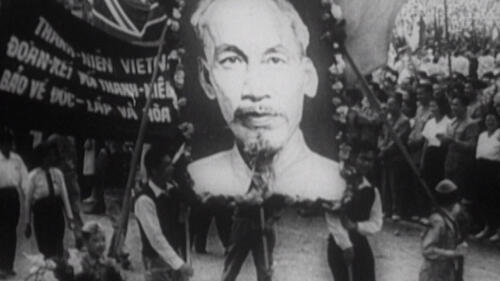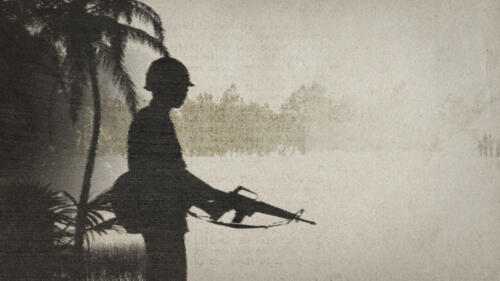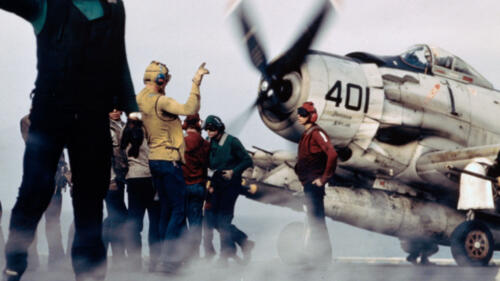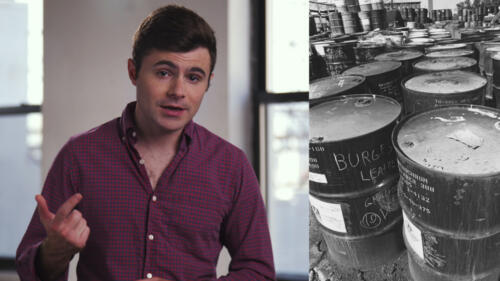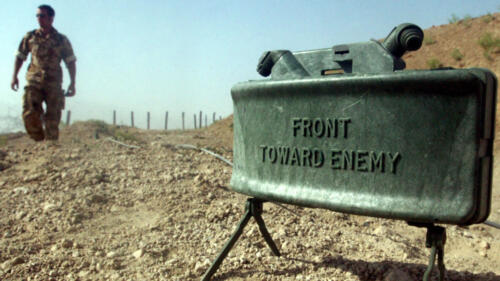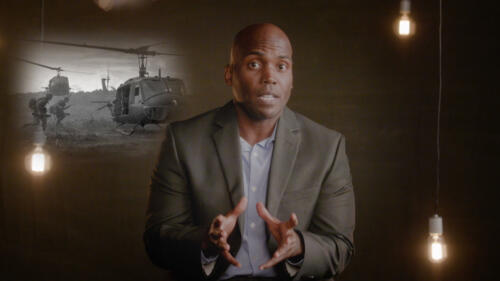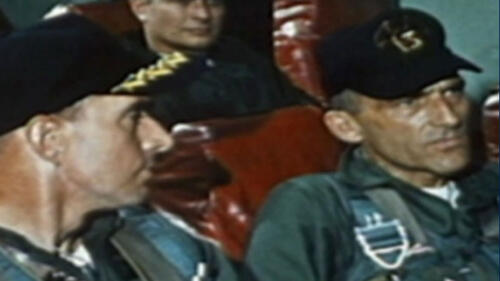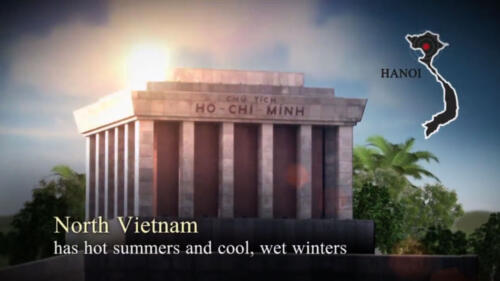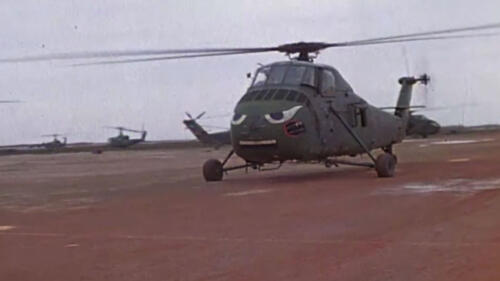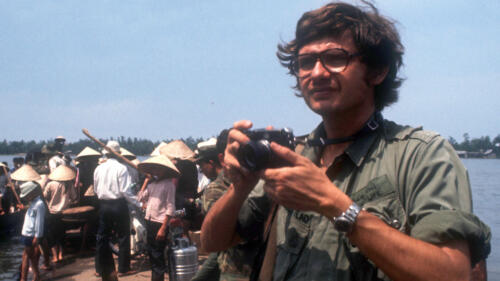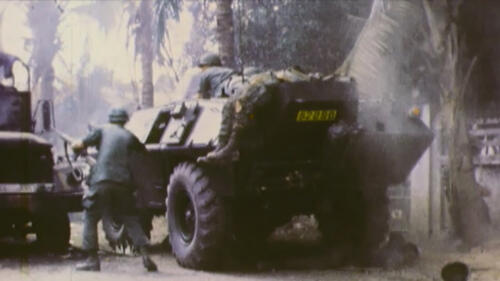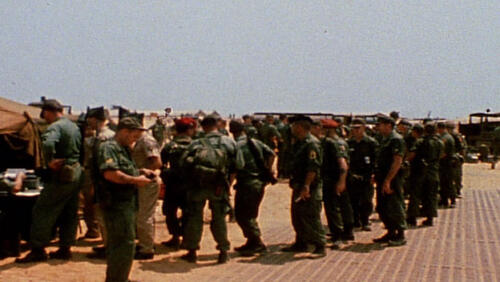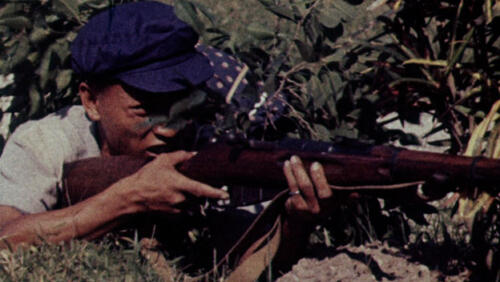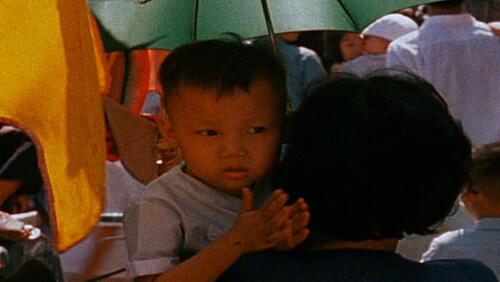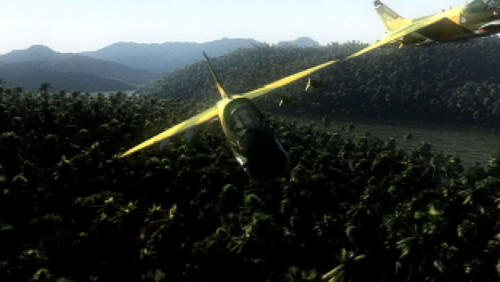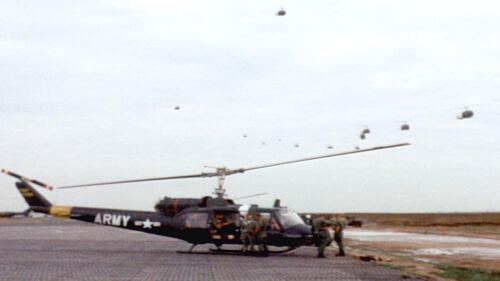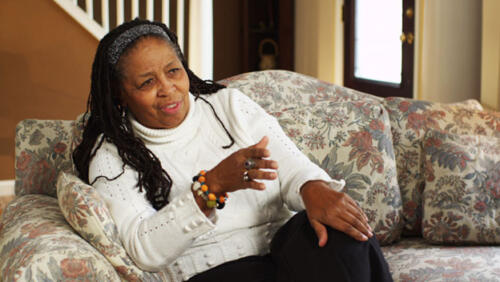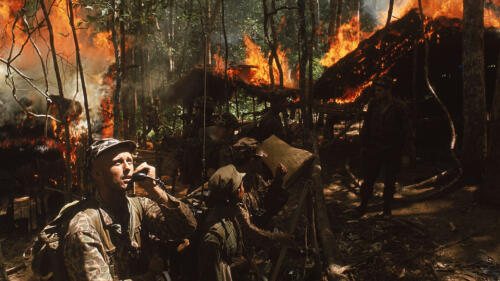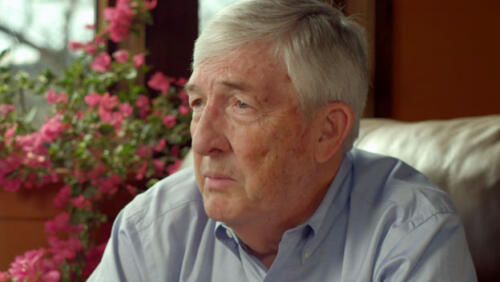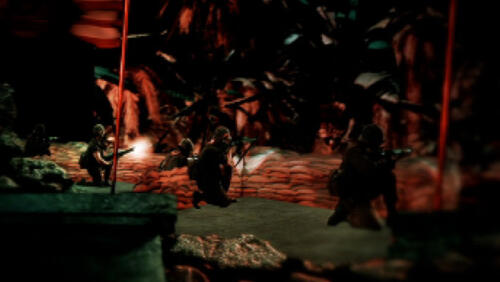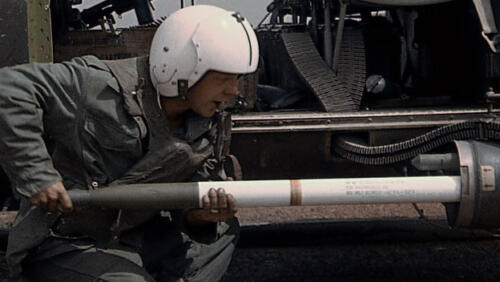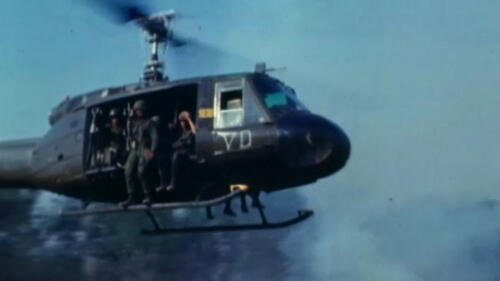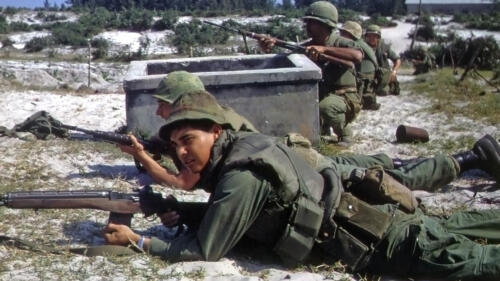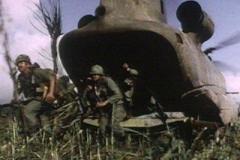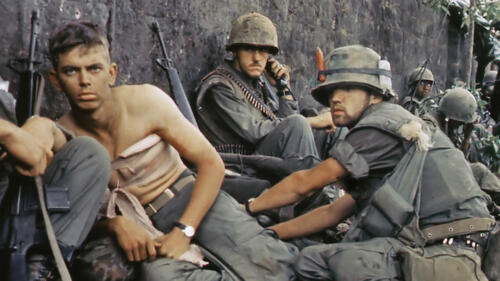Vietnam War
The Vietnam War pitted communist North Vietnam and the Viet Cong against South Vietnam and the United States. The war ended when U.S. forces withdrew in 1973 and Vietnam unified under Communist control two years later.

Start Here

A guide to the complex political and military issues involved in a war that would ultimately claim millions of lives.

The conflict in Vietnam took root during an independence movement against French colonial rule and evolved into a Cold War confrontation.

Gifted photographers and reporters captured images that conveyed the agony and violence of the Vietnam war, and the deep divisions it drove in American society.

The hippie counterculture reached its height during the escalation of U.S. involvement in Vietnam, and subsided as the conflict drew to a close.
3 Controversial Moments
My Lai Massacre
My Lai Massacre
In 1968, Ron Ridenhour, an infantryman in Vietnam, wrote a letter to President Nixon detailing the murder of 500 civillians by the U.S. Army in what would come to be known as the My Lai Massacre.
Explore All Related Topics

The Flying Ace symbolized hope and, ultimately, exasperation.

Flag burning has long tested the limits of freedom of speech.

Military strategists weaponize fear, confusion and deception.

The dramatic rooftop photo was long mistakenly misidentified.

From tying the knot to claiming a medical condition, here are some of the ways men tried to dodge the Vietnam War draft.

Their specialty: the military's most sensitive—and unconventional—missions.

Nearly 12,000 helicopters saw action in the Vietnam War and were critical for combat, scouting, rescue missions and more.

Gifted photographers and reporters captured images that conveyed the agony and violence of the Vietnam war, and the deep divisions it drove in American society.

The fall of Saigon in April 1975 marked the close of the war, but also the beginning of one of the largest and longest refugee crises in history.

The conflict in Vietnam took root during an independence movement against French colonial rule and evolved into a Cold War confrontation.

In the wake of the Vietnam War, families of military members who never returned from service banded together to demand an accounting.

A weekend of escalating tensions exploded into 13 seconds of gunfire—and four dead in Ohio.

The conflict in Vietnam ended in turmoil with the largest helicopter evacuation of its kind in history.

Truman, Eisenhower, Kennedy, Johnson and Nixon all deepened U.S. involvement in the decades-long conflict.

In one episode, Klingons were stand-ins for the Soviets.

Adrian Cronauer saw his role on the radio in Vietnam as a way to keep members of the military entertained as they served their country.

After 10 days of bruising battle, U.S. forces took the hill, only to abandon it days later. Sniper fire was so intense, one soldier called it 'a human meat grinder.'

Substance abuse in the Vietnam War wasn’t just limited to the marijuana and heroin enlistees could buy on the black market. Military commanders also heavily prescribed pills to help improve soldiers' performance.

From poisoned arrows to deadly gases, chemicals have been deployed in warfare since Roman times.

It took 20 months for the war crime to come to light.

From the White Rose Society of Nazi Germany to the Hong Kong Umbrella Revolution, student protests can focus the world's attention on oppression and injustice.

Turns out, the US had made one miscalculation after another.

The War Powers Act is a congressional resolution designed to limit the U.S. president’s ability to initiate or escalate military actions abroad. Among other restrictions, the law requires that presidents notify Congress after deploying the armed forces and limits how long units can remain engaged without congressional approval.

The “Rainbow Herbicides” left a lethal legacy.

A guide to the complex political and military issues involved in a war that would ultimately claim millions of lives.

The Kent State shooting took place in 1970 when Ohio National Guard troops opened fire on Vietnam War protesters at Kent State University, killing four.

One real and one phantom firefight led the United States to engage more directly in the Vietnam War.

Check out six facts about this iconic testament to sacrifice and loss.

U.S. Army Women in Vietnam The great majority of the military women who served in Vietnam were nurses. All were volunteers, and they ranged from recent college graduates in their early 20s to seasoned career women in their 40s. Members of the Army Nurse...

Westmoreland’s Early Life and Military Career William Westmoreland was born in 1914 near Spartanburg, South Carolina, into a family whose ancestors fought in the Revolutionary War and served in the Confederate Army during the Civil War. He earned an app...

Vietnam War: Weapons of the Air The war saw the U.S. Air Force and their South Vietnamese allies fly thousands of massive low-altitude bombing missions over North and South Vietnam as well as over sites of suspected Communist activity in neighboring Lao...

Who Was Daniel Ellsberg? In 1967, at the request of U.S. Secretary of Defense Robert McNamara, a team of analysts working for the Department of Defense prepared a highly classified study of the U.S. political and military involvement in Vietnam from the...

Future leaders, filmmakers and more.

In order to combat better-supplied American and South Vietnamese forces during the Vietnam War, Communist guerrilla troops known as Viet Cong dug tens of thousands of miles of tunnels, including an extensive network running underneath the Cu Chi district northwest of Saigon.

Watch actual footage gathered from the Battle of Khe Sanh in the year 1968.

Operation Ranch Hand During the Vietnam War, the U.S military engaged in an aggressive program of chemical warfare codenamed Operation Ranch Hand. From 1961 to 1971, the U.S. military sprayed a range of herbicides across more than 4.5 million acres of V...

Ho Chi Minh (1890-1969) was a Vietnamese Communist revolutionary leader who was Chairman and First Secretary of the Workers' Party of Vietnam, and later became Prime Minister and President of the Democratic Republic of Vietnam during the Vietnam War.

The Chicago Seven (originally eight) were political radicals accused of conspiring to incite the riots that occurred at the 1968 Democratic National Convention in Chicago. During the five-month trial, the prosecution stressed the defendants’ provocative...

Vietnamization was a strategy that aimed to reduce American involvement in the Vietnam War by transferring all military responsibilities to South Vietnam.

Operation Rolling Thunder (Mar 2, 1965 – Nov 1, 1968) was the codename for an American bombing campaign during the Vietnam War.

The My Lai massacre was an attack on the Vietnamese village of My Lai during the Vietnam War, when hundreds of civilians were raped and murdered by U.S. troops.

The Vietnam War was a long, costly and divisive conflict that pitted the communist government of North Vietnam against South Vietnam and its principal ally, the United States.

The Tet Offensive of 1968 was a coordinated series of North Vietnamese attacks against more than 100 cities and outposts in U.S.-supported South Vietnam.

In August 1964, after two U.S. destroyers stationed in the Gulf of Tonkin were attacked by North Vietnamese forces, Congress passed the Gulf of Tonkin Resolution, which authorized President Johnson to take any measures he believed were necessary to retaliate. The resolution became the legal basis for the United States to enter the Vietnam War.
